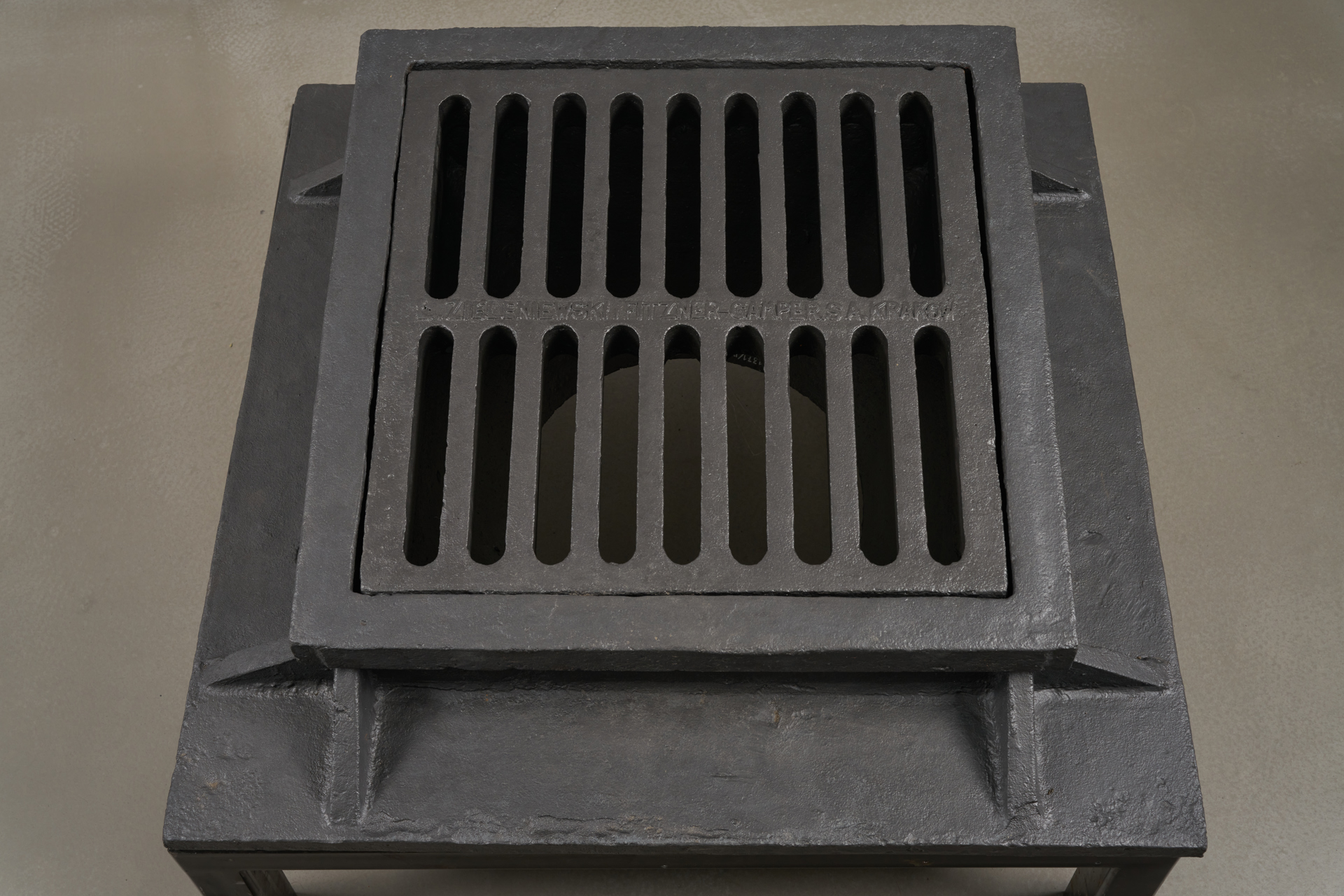
Drainage grate inscribed with “L. Zieleniewski, Fitzner-Gamper S.A. Kraków”
Zjednoczone Fabryki Maszyn, Kotłów i Wagonów L. Zieleniewski i Fitzner Gamper Spółka Akcyjna, / 1928 - 1939Creator
Zjednoczone Fabryki Maszyn, Kotłów i Wagonów L. Zieleniewski i Fitzner Gamper Spółka Akcyjna
Time and place of creation
Time:
1928 - 1939
Place:
Poland
The purpose of a drainage grate is to receive rainwater from the street and to deliver it to the stormwater drainage system. Before the introduction of water supply and sewerage networks as we know them today, access to water and the ability to remove pollution in cities was very difficult. There were troughs between the street and pavement, called gutters, which drained all kinds of waste poured into them by hand, as well as rain and melt water. Gutters were a source of nasty smells and a reservoir of hazardous pathogens; in the winter they would often freeze over, which made it necessary to clean them by hand. All this had a major impact on the health of city dwellers and their life expectancy. The beginnings of Kraków’s modern water supply network date back to 1901, when a water supply pipeline was commissioned with a water intake at Bielany. Along with its accompanying sewerage system, the network has been grown and modernised, which enables it to be used up until this day.
The item was made in Zjednoczone Fabryki Maszyn i Wagonów L. Zieleniewski, Fitzner-Gamper SA, which is among the oldest companies in the Polish machine building sector. The factory’s history began in 1804 when Antoni Zieleniewski opened a forge in Kraków. Over the following years, his son Ludwik contributed to the company’s development and the opening of new factories in the city. At present, the company operates as Zakłady Budowy Maszyn i Aparatury im. Ludwika Zieleniewskiego w Krakowie SA, but all production is carried out in nearby Niepołomice.
Interesting fact: After the transformation of the political system in Poland there were many thefts of cast iron components of urban infrastructure, such as drainage grates and manhole covers. This was driven by the high prices of scrap metal and resulted in some of the items that were originally made of cast iron being replaced with concrete versions.
References:
Kuźnica Zieleniewskich, Museum of Urban Engineering in Kraków website, https://www.mim.krakow.pl/kuznica-zieleniewskich (Accessed: 9.05.2021).
R. Wierzbicki, Wodociągi Krakowa, Kraków 2011, book available in the Repository of the Kraków Technical University at: https://suw.biblos.pk.edu.pl/viewResource&mId=444027 (Accessed: 9.05.2021).
Z. Wolfram, „L. Zieleniewski” – to brzmi dumnie!, official website of Zakład Budowy Maszyn i Aparatury im. Ludwika Zieleniewskiego w Krakowie 2004, http://www.zieleniewski.com.pl/27,historia,50 (Accessed: 9.05.2021).
Drainage grate inscribed with “L. Zieleniewski, Fitzner-Gamper S.A. Kraków”
Zjednoczone Fabryki Maszyn, Kotłów i Wagonów L. Zieleniewski i Fitzner Gamper Spółka Akcyjna, / 1928 - 1939Creator
Zjednoczone Fabryki Maszyn, Kotłów i Wagonów L. Zieleniewski i Fitzner Gamper Spółka Akcyjna
Time and place of creation
Time:
1928 - 1939
Place:
Poland











